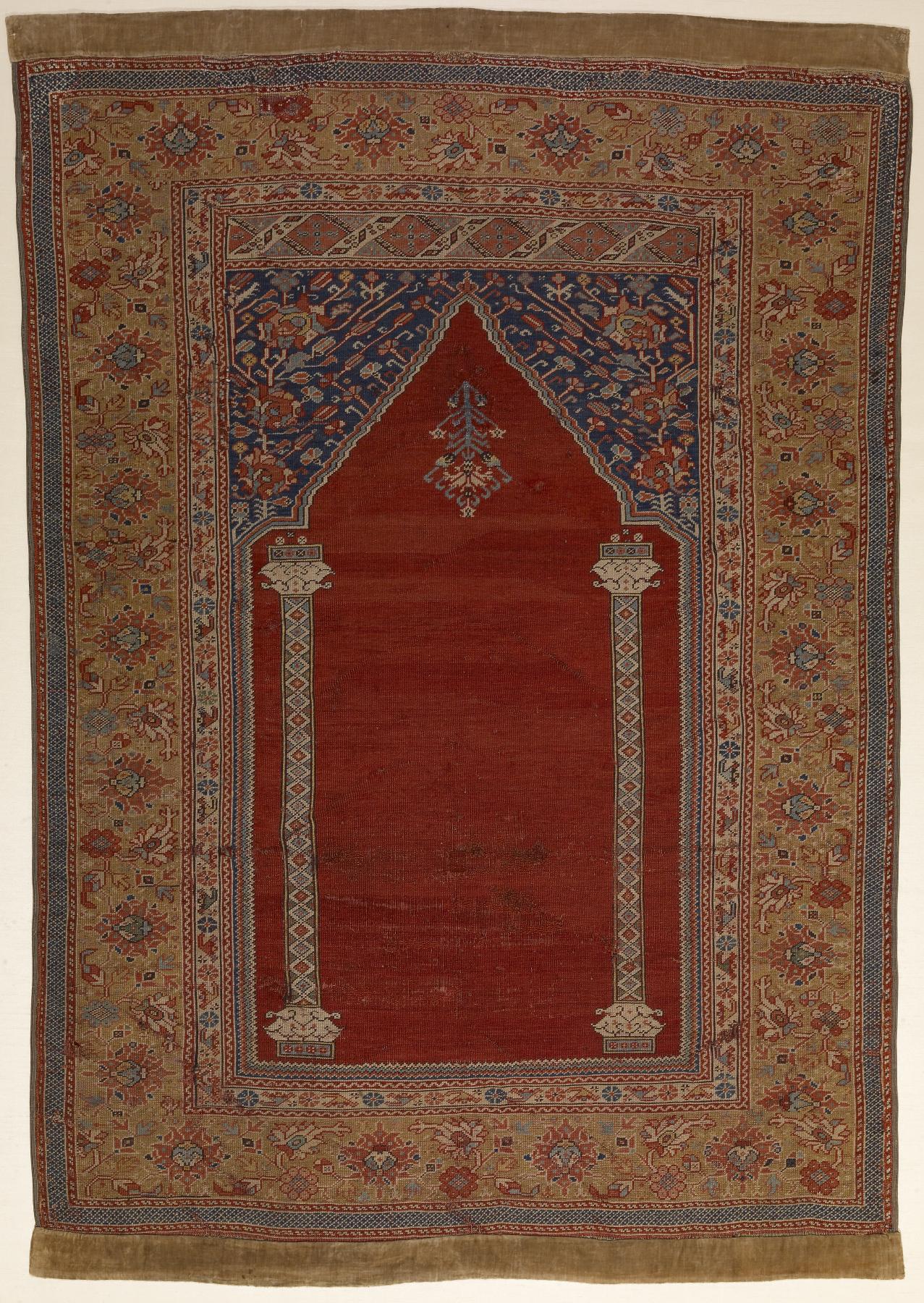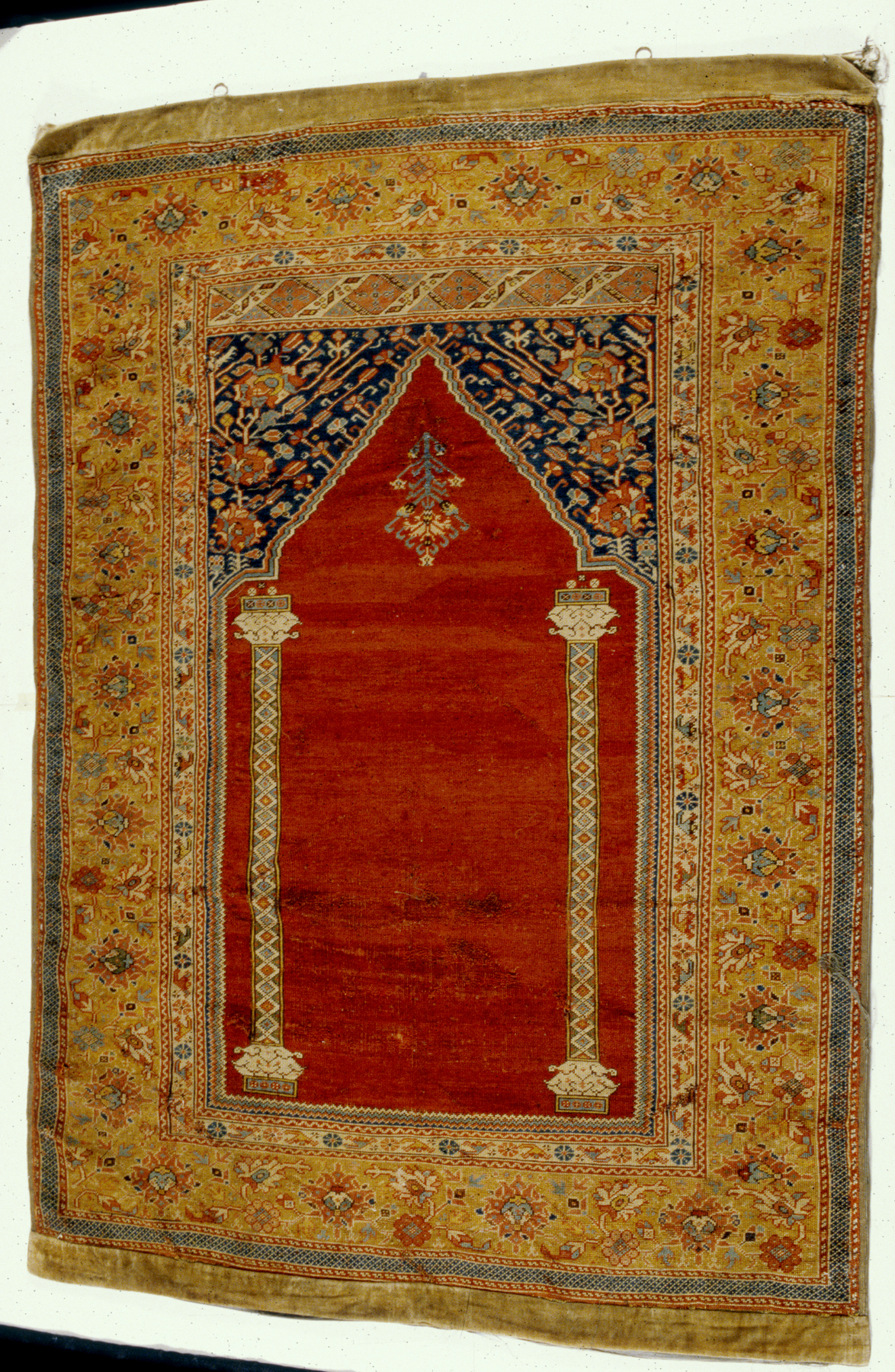Prayer Rug
During their daily prayers, Muslims traditionally roll out small rugs to cover the ground, creating a ritually clean space for their devotions. Likewise, the floors of mosques, which are places of communal worship, are covered with carpets on which Muslims perform their sequence of prayers.
Islamic prayer rugs vary enormously in decoration, but they frequently feature a framed panel with twin columns supporting an arch that represents the mihrab, or niche in the wall of a mosque, indicating the direction of prayer toward Mecca. With this 18th-century rug, the worshiper would see the arched form- and thus be reminded of Mecca- when looking down in prayer.
Provenance
Provenance (from the French provenir, 'to come from/forth') is the chronology of the ownership, custody, or location of a historical object. Learn more about provenance at the Walters.
Henry Walters, Baltimore [date and mode of acquisition unknown]; Walters Art Museum, 1931, by bequest.
Geographies
Turkey, Ghiordes (Place of Origin)
Measurements
H: 66 15/16 × W: 48 1/4 in. (170 × 122.5 cm); Mounted, H: 72 × W: 52 1/4 × D: 1 1/4 in. (182.9 × 132.7 × 3.2 cm)
Credit Line
Acquired by Henry Walters
Location in Museum
Not on view
Accession Number
In libraries, galleries, museums, and archives, an accession number is a unique identifier assigned to each object in the collection.
In libraries, galleries, museums, and archives, an accession number is a unique identifier assigned to each object in the collection.
81.1




